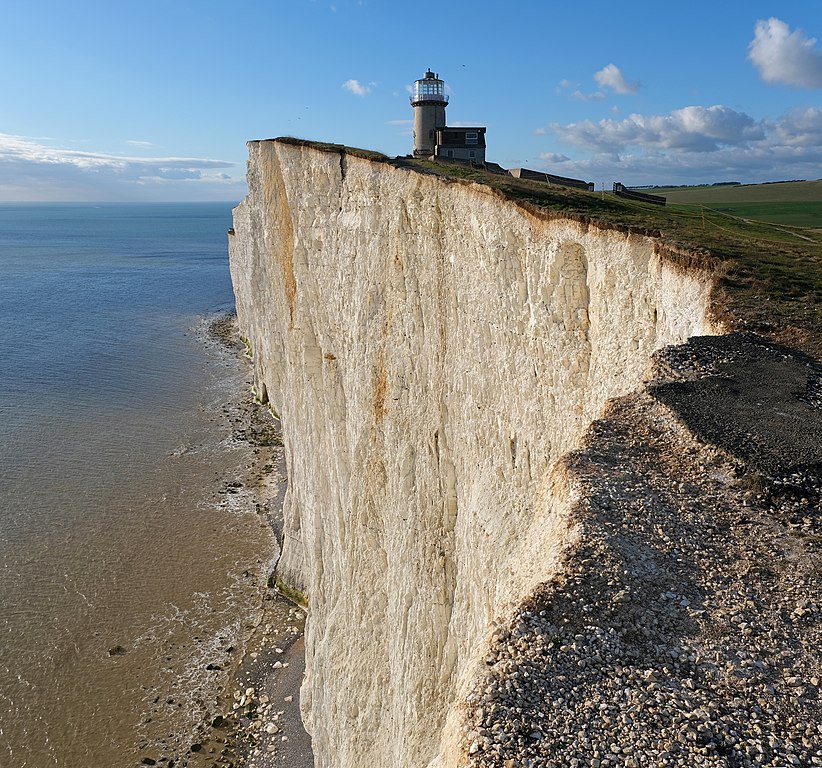Chalk
Back in the old days, before computer tablets and smartphones, every kid had plenty of experience with chalk, because it’s what they used to write on the big board at the front of their classroom, which in those days was made of a metamorphic rock called slate. Nowadays, you might still find it in some classrooms, but you also might know that it works pretty well for drawing things on the sidewalk. Chalk is a sedimentary rock that is a type of limestone and is made up of almost all calcite. Where did all this calcite come from? It came from the shells and skeletons of various types of ocean life, mostly microscopic plankton but also shellfish, coral, and other sea creatures, that piled up at the bottom of the sea over millions of years until they were compressed into chalk. Although the source of limestone in general can be similar types of sediments, chalk forms with its chalky texture because the specific sea creatures it’s made of had very little magnesium in them. Creatures with more magnesium get naturally cemented together and end up creating much more rocky rock, like the kind of limestone used for building. One of the largest and most famous deposits of chalk in the world is the White Cliffs of Dover in England. These huge cliffs are right on the ocean and are hundreds of feet tall and eight miles long. They’re not exclusively chalk though, as some layers contain deposits of flint, and you can find flint pieces at the base of the cliffs as they’re gradually eroded by the waves.
| Formula | Group or Type | Shape | Hardness | Specific Gravity | Streak | Luster |
|---|---|---|---|---|---|---|
| — | — | — | 1–3 | 2.3–2.4 | — | — |


